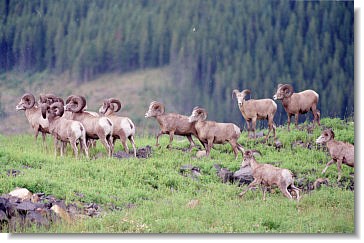Module 2 - Maintaining stand level biodiversity
Overview of module 2
Maintaining stand level biodiversity has one major heading and several subheadings:
- General biodiversity management considerations
- Forest Edge and Interior Habitat (Patch Size)
- Forest Management Practices to manage for edge and interior habitat
- Natural disturbances and cutblock size
Learner Outcomes
- On completion of this module, you will be familiar with maintaining stand level biodiversity
- Discuss the general biodiversity management considerations
Pre-reading questions
The following questions will determine how much you already know about managing forests for biodiversity. It is suggested that you use a mind map to assist you in remembering. A mind map is a powerful tool because it allows the right hemisphere and the left hemisphere of the brain to work together.
When you have completed the module, return to your mind map and add new facts or ideas, and change or modify those that may be incorrect or need to be updated. Here's an additional illustration of a mind map.
Use a different color of pen so it is obvious what you have added, modified, or changed. This is intended to be a positive experience.
- Why should we manage our forests for biodiversity?
- What should forest managers consider when managing biodiversity?
- What do you already know about forest edge and interior habitat or patch size?
- What do you know about the relationship between natural disturbances and cutblock size?
Why Manage for Biodiversity?
Can you name three reasons for managing biodiversity for the each of the following; economic, ecological, & social?
There are many reasons to manage for biodiversity-economic, ecological, and social and otherwise; however, the following quote, written decades ago by Aldo Leodpold, may summarize the most compelling reason.
Conservation is a state of harmony between men and land. The land is one organism. Its parts, like our own parts, compete with each other and co-operate with each other. The competitions are as much a part of the inner workings as the co-operations…
…Only those who know the most about (the complexity of the land organism) can appreciate how little we know about it. The last word in ignorance is the man who says of an animal or plant: "What good is it?" If the land mechanism as a whole is good, then every part is good, whether we understand it or not. If the biota, in the course of aeons, has built something we like but do not understand, then who but a fool would discard seemingly useless parts? To keep every cog and wheel is the first precaution of intelligent tinkering.

Bighorn sheep, a species that benefits from stand level biodiversity.


